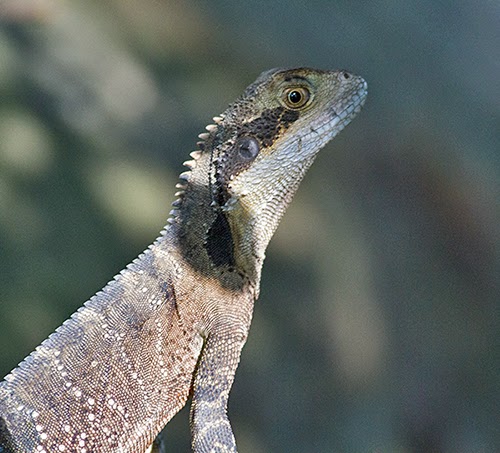During my years working for Tropical Birding Tours, I have had some crazy schedules in my time, hopping from one country, or even continent, to another, in rapid succession. However, my October agenda was the strangest one yet. I flew all the way from my adopted home, Quito, deep in the Andes of Ecuador in South America; all the way over to Sydney for the inaugural "Australasian Birdfair". This involved lots, and lots of travel time, for a mere 2 nights in Australia, before I was whisked back to South America, with a heavy dose of jetlag added, just days later! The jetlag was duly added, but I did have a brilliant, if brief, time in Australia, a country, and continent, which I love dearly.
The reason for stepping on to Antipodean soil, was to see the birdfair, man a stand there, and also help with the launch of a recent Australian field guide to birds that I played a small part in, as the principal author, Iain Campbell, was unavailable to do so.
Even though I had the briefest of weekends in the country, I saw an opening, and an opportunity, to see an Australian bird that has eluded me ever since my only sighting of the species, way too far back, in 2006. A Powerful Owl had been seen in Sydney's beautiful botanic gardens, and two Tropical Birding guides, Nick Leseberg and Scott Watson, met me off my flight in Sydney so that we could go and see it. Nick had seen it the previous week, knew the precise Black Bean tree where it had chosen to sleep of late, and so we headed straight there...the tree was quite attractive, but would have been a lot more interesting had the owl been siting in it! Once again, this Powerfully Elusive Owl had managed to slip through the net again for me, (an almost annual event, during my Australian visits).
However, the fair was a lot of fun, and after meeting Chris Gladwin, at the fair, who convinced me the owl has been super reliable; (I even met a birder at the fair, with a photo of the owl, in the very same Black Bean tree, taken on the Friday before my Saturday arrival!), I decided to try again in the short time I had on the Monday before my long journey back to South America was to begin. Chris's directions were pinpoint, and I soon found myself again standing under that same, and similarly owl-LESS, Black Bean tree. I decided, with such a short time in Australia I should enjoy my final few hours on the continent and spend time with a number of their common, comical, and completely Australian species in the park, and try to photograph some of these to salvage my birding time. I really enjoyed this; after all I am only in Australia for short periods, and so when I am, I fully appreciate even their most familiar species.
Walking around this wonderful city park, with the famed Harbour Bridge in view beyond, I stalked Masked Lapwings as they foraged on the well-manicured lawns; noticed a pair of enormous Channel-billed Cuckoos, which the local Pied Currawongs were trying their best to eject from the park (this, the world's largest cuckoo, parasitises the nests of this species); watched on as the super common, and super colourful, Rainbow Lorikeet went about prospecting potential nest sites in a local gum tree; looked on as a Magpie Lark drank from one of the ornate fountains in the gardens; noticed an Eastern Water Dragon frozen still in the shade; and I also appreciated how bizarre this continent is, when one of its most abundant birds is the cartoonish Sulphur-crested Cockatoo.
While Australians may scoff at my appreciation of all of these, exceedingly abundant, birds, this is exactly what makes Australia different; even their most common species are special, and so unlike the majority of common birds on the rest of the planet. A quick glance around a park such as this in Sydney leaves you in no doubt, from examining the local birdlife, which continent you are standing in!!! With regret, I boarded my plane out , hoping that fate would bring me back to the "wide brown land" again next year; and I soon left Australia disappearing in my rear view mirror...
As I landed back in South America, and Quito, I wondered what had changed since I had been gone? With migration south from the boreal north now well under way, what new migrants were in town, and which species had already made it to their tropical wintering grounds...






































No comments:
Post a Comment